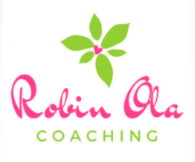We throw around the term ‘emotional eating’ a lot. Sometimes we even act like it is some kind of affliction that we contracted or is part of our personality. We say things like, “I have always been an emotional eater” or “I always eat when I am ____,” filling in the blank with worried, sad, mad…
I know I have made statements like this before. We think that this “emotional eating” is not a choice, just something about us, like our eye color.
But What Is It Really?
Let’s start with what it’s not. It is NOT eating because we feel an emotion. An emotion does NOT create the eating. It is actually the opposite. It IS when we are trying to get rid of or lessen the emotion by eating to numb the feeling. This is an important distinction.
Sit with the contrast for a minute and make sure that you get it.
You don’t eat because you are stressed. You eat to try to lessen the feeling of stress. You don’t eat because you feel frustrated. You eat because you don’t like the feeling of being frustrated and eating temporarily gets rid of it or makes it less intense.
Let’s look at stress a little closer as an example. When we are feeling stressed and grab a snack, we may look back on this action and attribute the eating to the feeling of stress. But really, it was our lack of willingness or ability to feel the stress without trying to get rid of it.
You may research stress-eating and find ways to eliminate or reduce stress. Great, do them all, less stress is always a good thing! If I thought that we could get to the point of never feeling stressed or anxious, I would not have written this article.
But we all know that we will feel stress from time to time as humans, and that it really is a part of life. So, it is essential that we know how to feel stress without feeling the need to get rid of it or lessen it with food.
The First Step to Control Your “Emotion Avoidance Eating”
The first step is really learning to recognize what you are feeling. It’s so interesting how little we notice our emotions. We were typically not taught as children to identify or acknowledge what we were feeling. In fact, we may have been taught to ignore or suppress our emotions.
I heard things like, “Stop crying or I’ll give you something to cry about” and “Calm down and get a hold of yourself.” Did you get these messages as well? Being “emotional” was a bad thing, to be avoided at all costs!
Even in society, when we greet each other with “How are you?” the response is usually a generic “fine” or “good.” I realize that those greetings are often just a form of hello, but do we ever really ask and listen to each other or ourselves when asking “How are you?”
I guess we don’t have to freak out our acquaintances by launching into a deep, thoughtful list of all of our feelings when they ask how we are, but maybe we could occasionally give the real answers to the people closest to us? We could let them know how we are really feeling, and ask and fully listen to how they are?
How about doing it for ourselves more often? Do you ever check in with yourself to see how are you feeling?
And Where Do Those Emotions Even Come from?
Emotions don’t just fall on our head and drip through our body. We actually create them with our thinking. This process is not always obvious, but it is always true. Little quick thoughts we don’t even recognize are sometimes the culprit.
This topic deserves more discussion (maybe Emotional Eating 102?), but for now, remember that we have power over our emotions because we create them. Noticing and controlling our thoughts, and therefore our emotions, is a skill that can be developed.
Emotions can also become a well-practiced habit. Feel worried, need ice cream. Frustrated with work, must have chips. Feeling a little lonely or bored, cake or cookies are required. Notice if you have any emotion/snack habit loops. You can often change a habit with awareness and conscious distraction.
What Can We Do Instead of Soothing with Food?
Let’s take an example of feeling lonely. As you learn to recognize how you are feeling, you can identify the emotion and decide to feel lonely without doing anything about it. The skill of letting an uncomfortable emotion just be there without trying to get rid of it is one of the most powerful skills you can learn.
You may hear this called ‘allowing an emotion’ or ‘processing emotion’. It might sound something like this in your head, “I am feeling lonely, it is just an emotion that I am creating with my thinking. I don’t like how it feels, but I am not going to try to make it go away with food.” This takes some practice and awareness, but it IS possible!
Learning to identify and allow emotions is a skill. If you, like me, were never taught this skill, it’s not too late.
When we gain this expertise, we won’t need a bowl of ice cream or bag of chips to rid or lessen a feeling that we don’t care for. We can just acknowledge that we are normal humans having normal human emotions and it is okay!
To help learn how to deal with your emotional eating, get my worksheet – Stop Emotional Eating.



